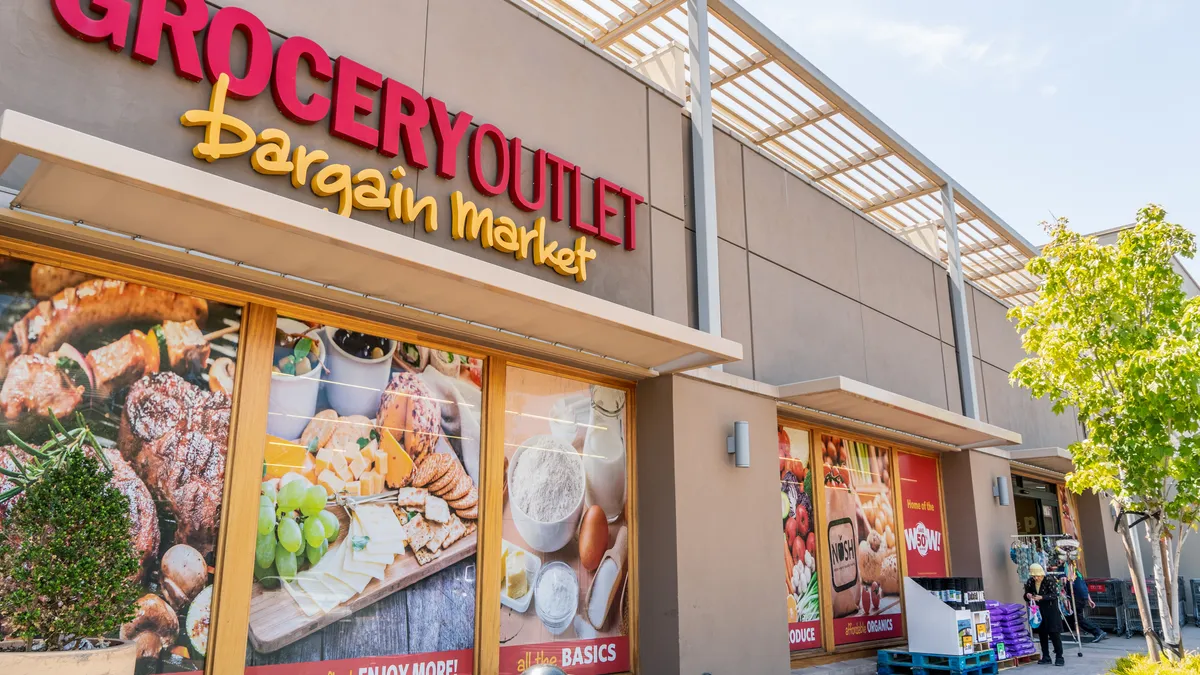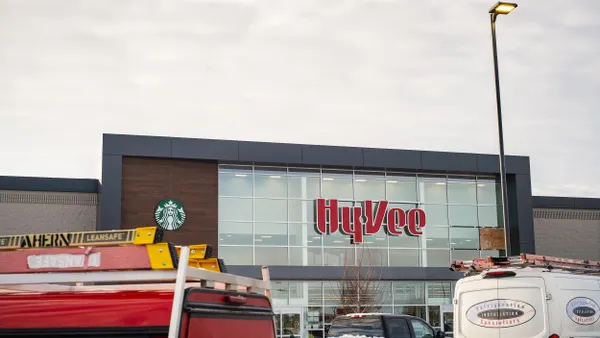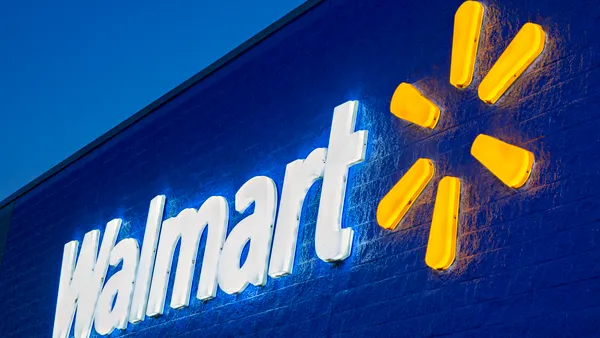Dive Brief:
- Grocery Outlet is continuing to struggle with systems inefficiencies that stemmed from its SAP technology transition mid-last year and is reconfiguring its pricing strategy after originally focusing on margins instead of value for the first three quarters of this year, Interim President and CEO Eric Lindberg told investors Tuesday.
- Grocery Outlet reported its net sales increased 10.4%, to $1.11 billion and its comparable-store sales increased 1.2% for its third quarter, which ended Sept. 28. The discount grocer’s net income decreased 10.9%, to $24.2 million.
- Grocery Outlet is looking to improve its financial performance by “doubling down on value,” Lindberg said, while it also searches for a new chief executive following the abrupt departure last week of RJ Sheedy.
Dive Insight:
Grocery Outlet has underperformed and made costly missteps at a time when consumers are increasingly gravitating toward discount grocery chains, and its stock price has slid as a result. To improve its performance in the near term, the company plans to improve technology-related issues, reevaluate growth initiatives and focus on pricing for value, Lindberg told investors.
Lindberg noted that Grocery Outlet’s transition from its legacy systems to SAP in August 2023 resulted in “significant issues, including poor data visibility, slow system speeds, and a loss of tools and functionality.”
“These issues hurt our buyers’ ability to write purchase orders efficiently, our inventory planning and supply chain teams’ ability to accurately manage inventory and our operators’ ability to see real-time inventory in their order guide to bring product into their stores,” Lindberg said.
Grocery Outlet has made strides in addressing the issues, Lindberg said, but continues to grapple with inefficiencies, including not yet having the real-time ordering guide and new arrival ordering guide back for independent operators.
Because the technology changes have strained Grocery Outlet’s business model, Lindberg noted that the company will be more “measured” in its growth initiatives: “Upon reflection, we probably have tried to do too much at once, further impacting our everyday execution.”
Lastly, the company “missed the mark on value earlier this year due to a combination of pricing actions we took to reestablish healthy margins that coincided with competitive pricing that picked up,” Lindberg said.
According to Lindberg, the company’s poor performance led to Sheedy’s departure from the company: “We finally got to a point after the last board meeting where we sat down, we had a frank conversation and we had an agreement to move forward.”
Grocery Outlet’s Q3 comps saw a 2% increase in the number of transactions but a 0.7% decrease in average transaction size. This week’s earnings results marked the discounter’s third consecutive quarter of achieving over $1 billion in net sales. Net income in Q3 dipped nearly 11% to $24.2 million, marking the company’s fourth consecutive quarter of declining net income.
During Q3, Grocery Outlet opened five new stores, bringing its store count to 529 at the end of the quarter. Lindberg said that the company’s new store growth algorithm is “back on track” to achieve its goal of 10% annual store growth. For FY 2025, Grocery Outlet said it will increase its capital expenditures due to a higher number of store openings and supply chain investments.
Grocery Outlet outlined its revised financial guidance for fiscal year 2024. Given forecasting difficulties, the company decided to be “prudent” with a more cautious full-year outlook, Interim CFO Lindsey Gray said.
The discounter now expects comp sales around 2.4% — 1 percentage point below the originally forecasted 3.5%. The company also now expects a slightly lower gross margin of 30.4%, below the previously expected 30.5%. Despite the lowered comps expectations, Grocery Outlet predicts its net sales for FY 2024 will come in just above $4.35 billion — slightly higher than the top end of its original forecasted range of $4.3 billion to $4.35 billion.












